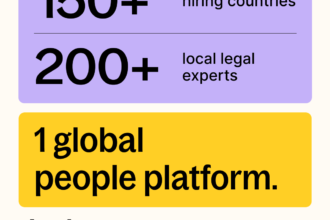Managing global payroll is a complex yet critical task for businesses expanding across borders. With different tax laws, employment regulations, and compliance requirements in each country, companies must navigate a challenging landscape to ensure employees are paid accurately and on time. In this blog, we explore the key challenges of global payroll, compliance considerations, and solutions that businesses can implement for smooth international payroll management.
Challenges in Global Payroll Management
1. Multi-Country Payroll Regulations
Each country has unique payroll laws, tax structures, and reporting requirements. Non-compliance can result in penalties, making it essential to stay updated with local regulations.
2. Currency and Exchange Rate Fluctuations
Global payroll involves payments in different currencies, and fluctuations in exchange rates can impact employee salaries and overall payroll costs.
3. Taxation Complexity
Companies must handle local income tax deductions, employer contributions, and social security payments correctly, ensuring proper tax withholding and reporting.
4. Cross-Border Data Security & GDPR Compliance
Payroll involves sensitive employee information, and businesses must comply with data protection laws such as GDPR (General Data Protection Regulation) to prevent breaches.
5. Delays in Payment Processing
International payroll requires coordination between multiple banking and financial institutions, which can cause delays in salary disbursement.
Solutions for Effective Global Payroll Management
1. Partnering with a Global Payroll Provider
A global payroll provider ensures compliance with local laws and manages tax deductions, social security, and benefits, reducing administrative burdens.
2. Using Employer of Record (EOR) Services
An EOR acts as the legal employer for your workforce, handling payroll, taxes, and compliance across multiple countries without the need to establish local entities.
3. Implementing Payroll Automation & Technology
Cloud-based payroll software centralizes data, automates calculations, and integrates with HR systems for real-time tracking and reporting.
4. Establishing a Strong Compliance Framework
Regular audits, local legal partnerships, and dedicated compliance teams help businesses stay ahead of regulatory changes.
5. Standardizing Payroll Processes Across Countries
A unified payroll system with clear policies ensures consistency in salary disbursements, benefits administration, and reporting.
Conclusion
Global payroll management requires strategic planning, regulatory compliance, and the right technological support. Whether you are expanding into new markets or managing a multinational workforce, leveraging global payroll solutions such as EOR services, automated payroll systems, and expert compliance teams can simplify operations and ensure seamless payroll execution.







